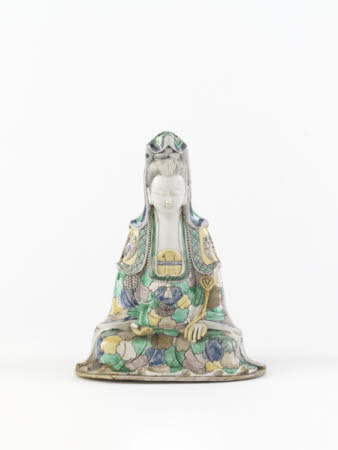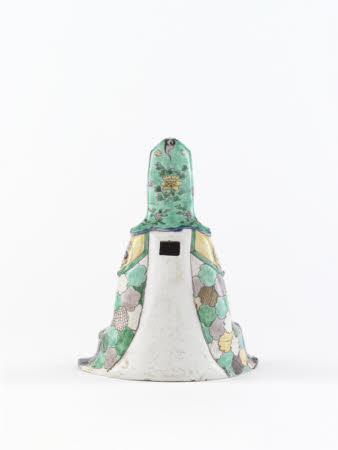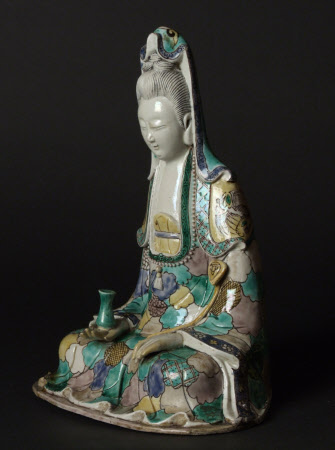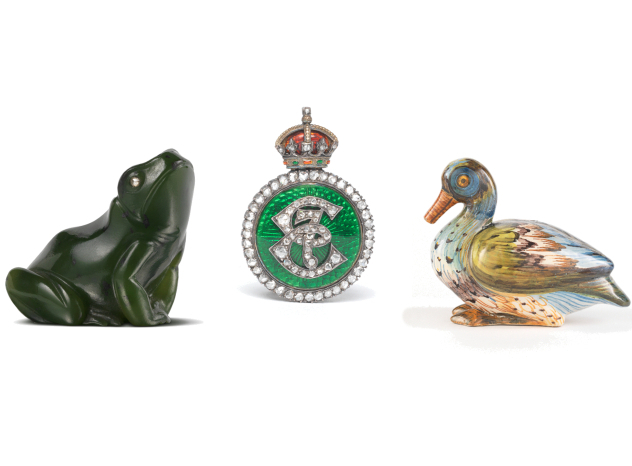Figure
Category
Ceramics
Date
1662 - 1722
Materials
Porcelain, enamel, lead glaze
Measurements
23.5 cm (H), 18.6 cm (W), 12.5 cm (D)
Place of origin
Jingdezhen
Order this imageCollection
Polesden Lacey, Surrey
NT 1245696
Caption
Guanyin is the Chinese version of the Indian Buddhist figure Avalokiteśvara, a bodhisattva or enlightened being who remains in the mortal realm to help others. Originally male, in China Guanyin came to be worshipped as a goddess of mercy. In her left hand Guanyin holds a ruyi or wish-granting sceptre, and the bottle in her right hand is said to contain water to refresh her devotees. But these religious meanings were lost in translation when these figures came to Europe, and they had a mainly decorative role in British interiors. A similarly composed and modelled figure of a seated Guanyin, but with a child on her knee, is in the collection of the Victoria and Albert Museum, London, inv. no. C.1275&A-1910 (Salting bequest); another similar figure, on a tall octagonal stand, is in the Metropolitan Museum of Art, New York, inv. no. 64.279.9a & b; another is said to be in the Taft Museum, Cincinnati; and another, holding a peach, formerly in the Harry Z. Isaacs collection, was at the time of writing with Ralph M. Chait Galleries, Inc., New York.
Summary
Porcelain figure, Chinese, Kangxi period (1662-1722). Representing the Buddhist figure of worship Guanyin, seated, holding a sceptre and a water bottle, decorated with yellow, blue, green, aubergine and black enamels on the biscuit (or unglazed surface) and with a transparent lead glaze on the face and hands, probably made in Jingdezhen, Jiangxi province, China.
Provenance
Bequeathed to the National Trust by Dame Margaret Greville, DBE (1863-1942).





